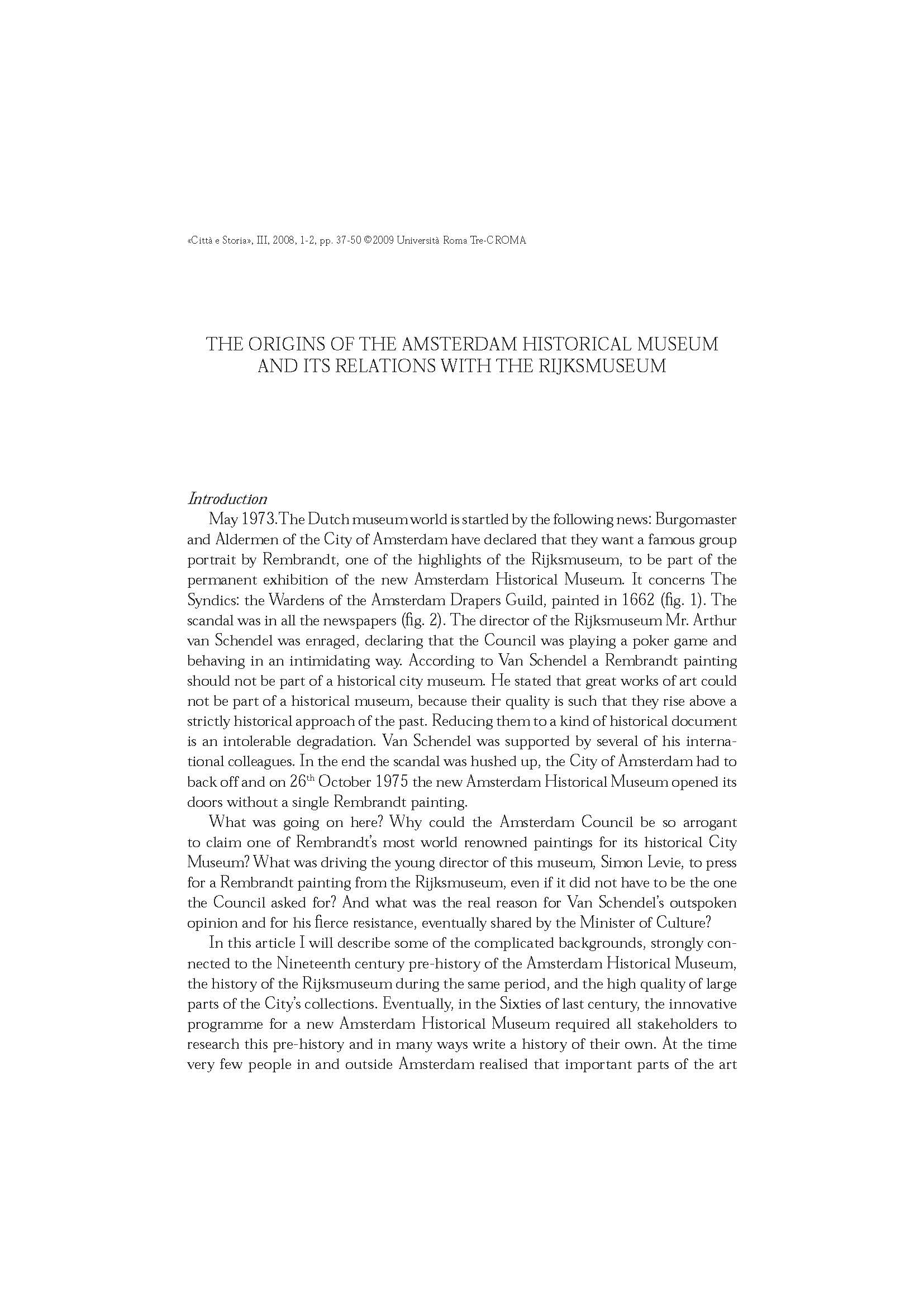The Origins of the Amsterdam Historical Museum and its Relations with the Rijkmuseum
6,00 €
In 1975 the new Amsterdam Historical Museum (AHM) opened its doors in the restored buildings of the former City Orphanage. For the first time the beautiful and interesting art and historical collections of the city could be admired in the context of the city history. During the years previous to this opening, the director of the AHM and his staff engaged in long and careful negotiations with the Rijksmuseum in order to withdraw a long list of paintings and objects of art from the long term loan of the City of Amsterdam to this museum. The negotiations were not always easy, especially because the paintings and objects of this loan were often already part of the presentations of the Rijksmuseum since 1885, the year this museum was opened in Amsterdam. The director of the Rijksmuseum frequently used the argument that the AHM was a history museum, and not an art museum, like the Rijksmuseum. In the end the results were positive, with the exception of the return of one of the Rembrandt paintings. It took until 1994 to welcome Rembrandt’s Anatomical Lesson of dr. Deyman in the permanent presentations of the AHM.
The background for these close collection ties between the Rijksmuseum and the AHM may be found in the pre-history of this City museum, especially in the Nineteenth century.
In 1975 the new Amsterdam Historical Museum (AHM) opened its doors in the restored buildings of the former City Orphanage. For the first time the beautiful and interesting art and historical collections of the city could be admired in the context of the city history. During the years previous to this opening, the director of the AHM and his staff engaged in long and careful negotiations with the Rijksmuseum in order to withdraw a long list of paintings and objects of art from the long term loan of the City of Amsterdam to this museum. The negotiations were not always easy, especially because the paintings and objects of this loan were often already part of the presentations of the Rijksmuseum since 1885, the year this museum was opened in Amsterdam. The director of the Rijksmuseum frequently used the argument that the AHM was a history museum, and not an art museum, like the Rijksmuseum. In the end the results were positive, with the exception of the return of one of the Rembrandt paintings. It took until 1994 to welcome Rembrandt’s Anatomical Lesson of dr. Deyman in the permanent presentations of the AHM.
The background for these close collection ties between the Rijksmuseum and the AHM may be found in the pre-history of this City museum, especially in the Nineteenth century.

